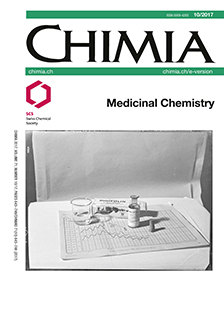Production of a Recombinant Catechol 2,3-Dioxygenase for the Degradation of Micropollutants
FH-HES Universities of Applied Sciences
DOI:
https://doi.org/10.2533/chimia.2017.734Keywords:
Bioconversion, Catechol, Catechol 2,3-dioxygenase, Enzyme, MicropollutantsAbstract
Phenolic compounds such as catechol represent a particular type of micropollutant whose high stability prevents rapid decay and metabolization in the environment. We successfully cloned a catechol 2,3-dioxygenase (C2,3O) from Pseudomonas putida mt-2 and expressed it in Escherichia coli BER2566. The biomass isolated from shake-flask fermentations was used to partially purify the enzyme. The enzyme proved unstable in clarified liquid fractions (50 mM Tris buffer, pH 7.6) and lost more than 90% of its activity over 7 h at 25 °C. In the presence of 10% acetone, the process was slowed down and 30% residual activity was still present after 7 h incubation. Storage of the enzyme in clear liquid fractions also proved difficult and total inactivation was achieved after 2 weeks even when kept frozen at –20 °C. Lowering the storage temperature to –80 °C preserved 30% activity over the same period. Only minor reactivation of the affected enzyme could be achieved after incubation at 20 °C in the presence of FeSO4 and/or ascorbic acid. Activity loss seems to be due mostly to Fe2+ oxidation as well as to subunit dissociation in the tetrameric structure. However, complete degradation of 1.0 mM catechol could be achieved at 20 °C and pH 7.6 over a 3 h period when using a suspension of whole cells or alginate-encapsulated cells for the biotransformation. Contrary to the clear liquid fractions, these forms of biocatalyst showed no significant sign of inactivation under the working conditions.Downloads
Published
2017-10-25
Issue
Section
Columns, Conference Reports
Categories
License
Copyright (c) 2017 Swiss Chemical Society

This work is licensed under a Creative Commons Attribution-NonCommercial 4.0 International License.
How to Cite
[1]
Chimia 2017, 71, 734, DOI: 10.2533/chimia.2017.734.







